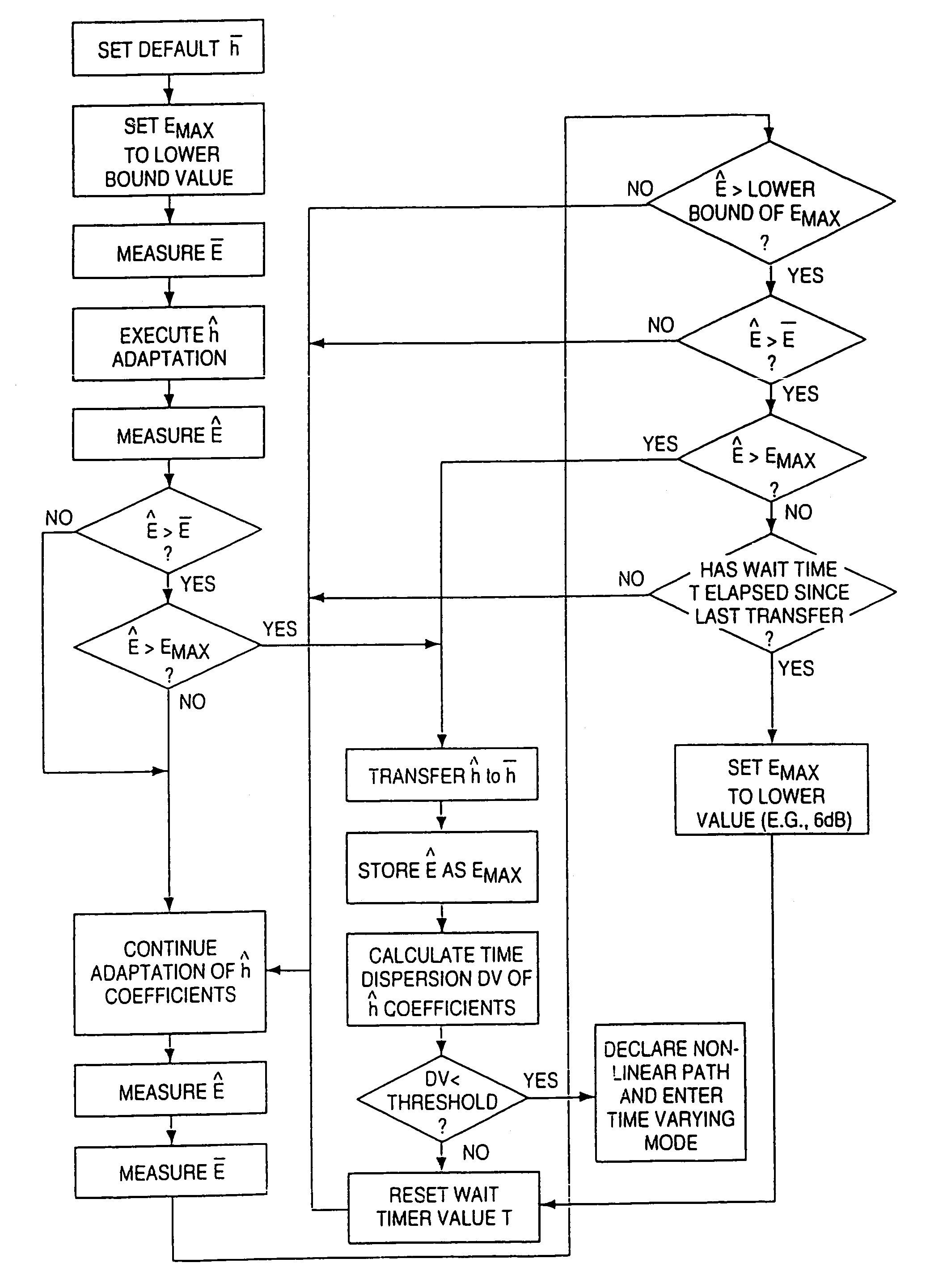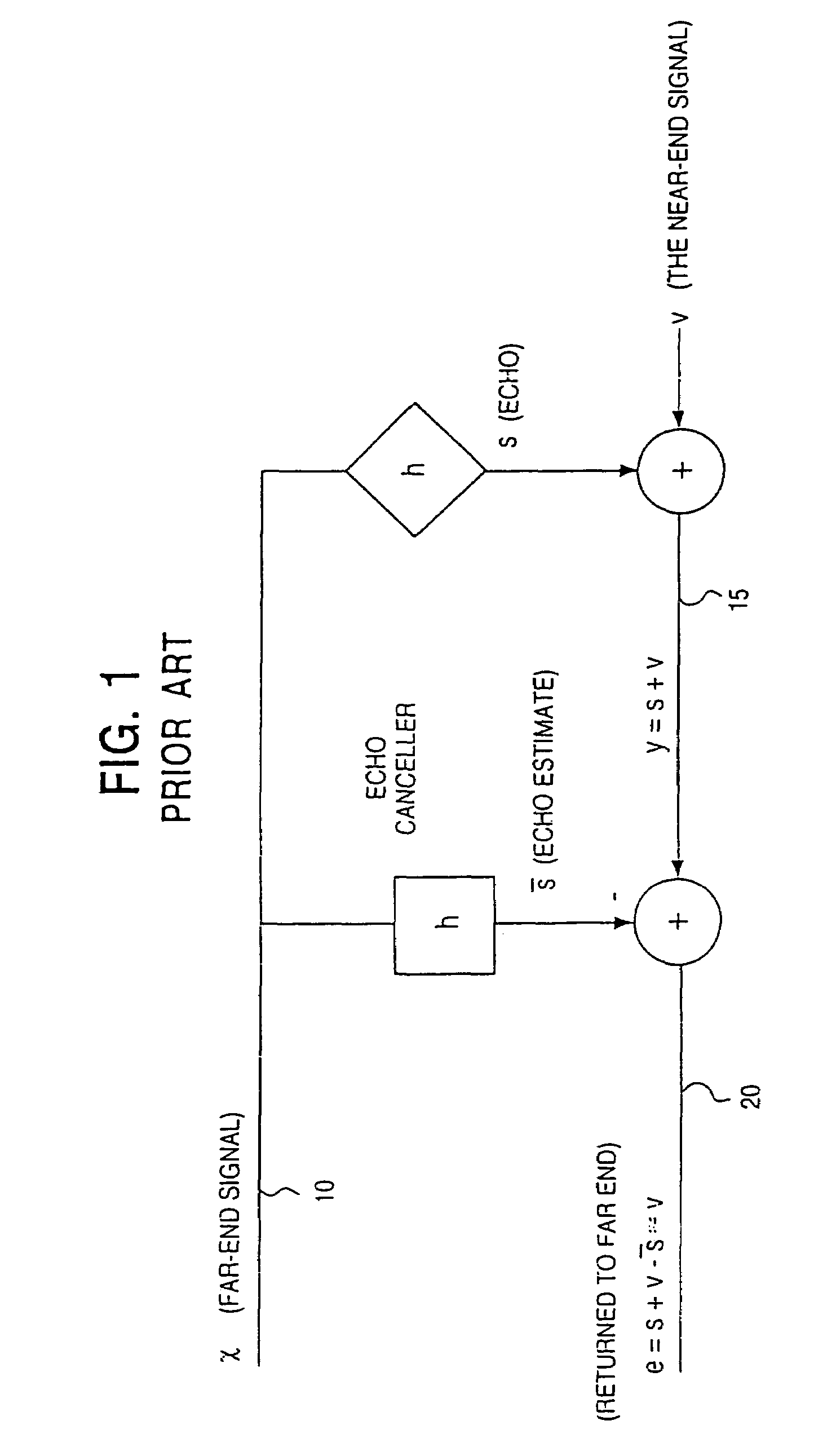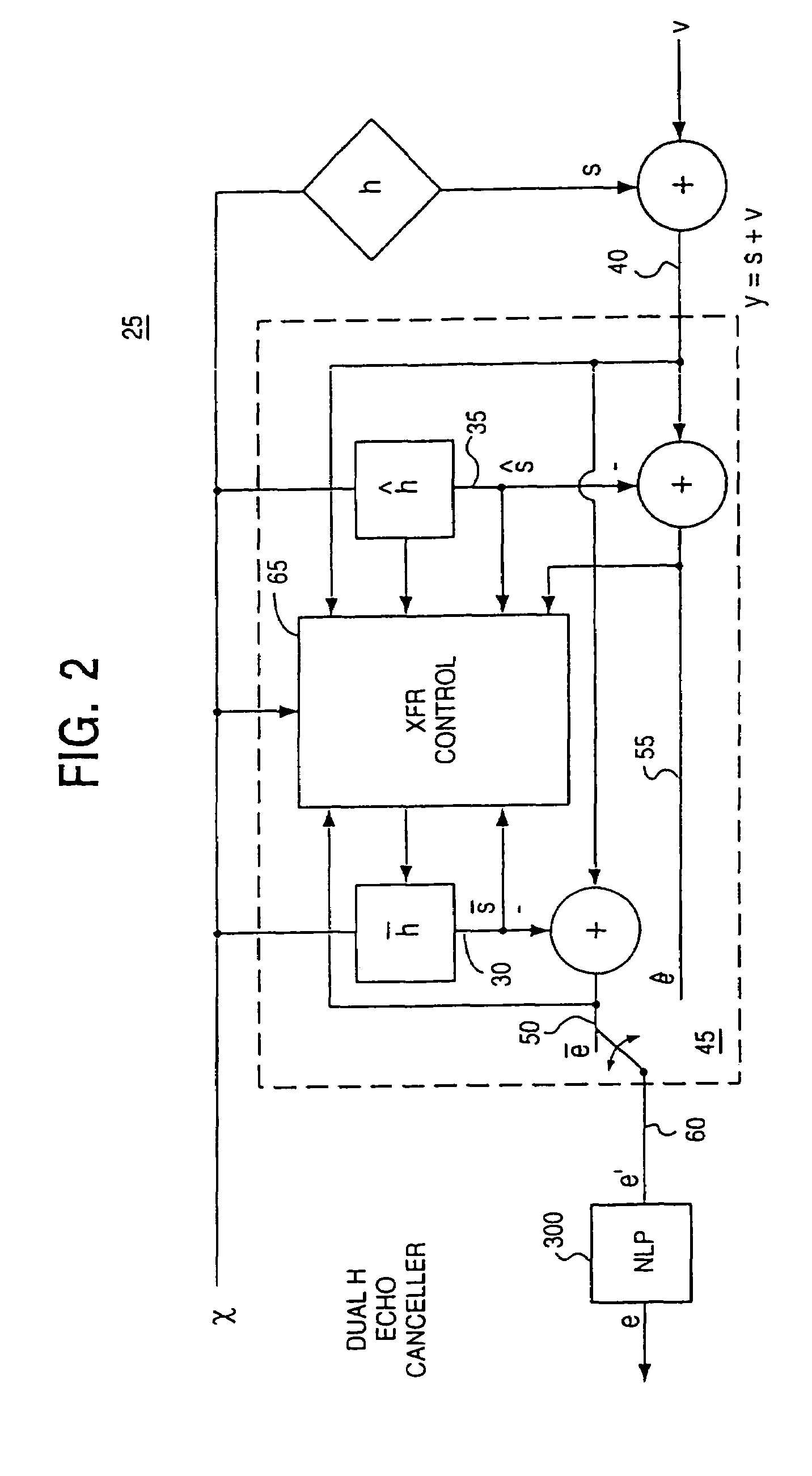Echo canceller employing dual-H architecture having improved non-linear echo path detection
a dual-h architecture and echo path technology, applied in the field of echo cancellers, can solve the problems of affecting the sound quality of the speaker, the impedance of the transmission circuit, and the inability of a given hybrid circuit to perfectly match the impedance of any particular two and four-wire transmission circuit, etc., and achieve the effect of reducing the noise of the echo path, distracting the speaker from the far end, and utterly confusing the speaker
- Summary
- Abstract
- Description
- Claims
- Application Information
AI Technical Summary
Benefits of technology
Problems solved by technology
Method used
Image
Examples
Embodiment Construction
[0026]FIG. 2 illustrates one embodiment of a dual-h echo canceller suitable for use in implementing the present invention. As illustrated, the echo canceller, shown generally at 25, includes both a non-adaptive filter h and an adaptive filter ĥ to model the echo response h Each of the filters h and ĥ are preferably implemented as digital filters, such as finite impulse response (FIR) filters comprising a plurality of taps each having a corresponding tap coefficient. This concept may be extended to IIR filters as well. If FIR filters are used, the duration of each of the FIR filters should be sufficient to cover the duration of the echo response of the channel in which the echo canceller 25 is disposed.
[0027]The output of the non-adaptive filter h is available at the line 30 while the output of the adaptive filter ĥ is available at line 35. Each of the signals at lines 30 and 35 are subtracted from the signal-plus-echo signal of line 40 to generate echo compensated signals at lines 5...
PUM
 Login to View More
Login to View More Abstract
Description
Claims
Application Information
 Login to View More
Login to View More - R&D
- Intellectual Property
- Life Sciences
- Materials
- Tech Scout
- Unparalleled Data Quality
- Higher Quality Content
- 60% Fewer Hallucinations
Browse by: Latest US Patents, China's latest patents, Technical Efficacy Thesaurus, Application Domain, Technology Topic, Popular Technical Reports.
© 2025 PatSnap. All rights reserved.Legal|Privacy policy|Modern Slavery Act Transparency Statement|Sitemap|About US| Contact US: help@patsnap.com



